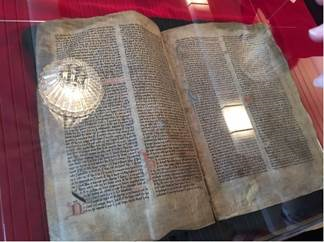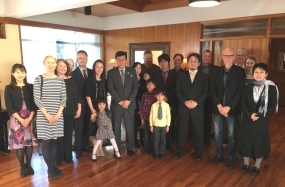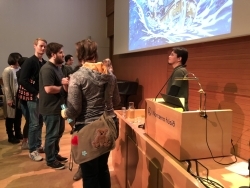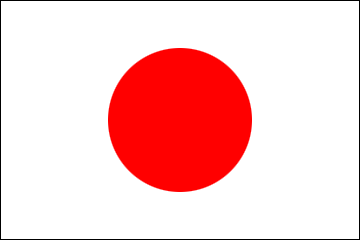From Ambassador
2018/8/15
The Icelandic Sagas and Manga



From left to right) Original manuscript of an Icelandic Saga, A group photo taken at the Ambassador's residence, A lecture by Mr. Yukimura at the Nordic House
The 17th International Saga Conference was held the other day. The conference, which is held every three years, sees researchers of the Icelandic Sagas gather from all over the world. The first conference was held in Edinburgh, UK in 1971 and the subsequent conferences have been held in related countries. This was the 3rd time for Iceland to host the conference, but the country is the home of the Sagas.
The term „Saga“ is a general term for various biographies and stories written in the 12th and 13th centuries in Iceland, based on actual events that happened in Norway and Iceland. The Sagas are a collection of some 200 stories that have survived. It should be noted that the custom of „writing letters and documenting“ was not highly developed in Europe at the time, especially in the Nordic countries except Iceland, and therefore, the Sagas are said to be one of very few ways to get a real sense of how life was in those times.
For this year‘s conference, around 400 scholars and researchers attended from all over the world. The majority of participants were from European countries, Canada and the United Sates but several Japanese professors and researchers attended as well.
I assume that most Japanese people are not closely familiar with the Sagas, but many stories have been translated into Japanese with a great deal of effort of researchers and institutions such as “The Society for Icelandic Studies of Japan”. Even some Manga stories have used the Sagas indirectly as their motif. For example, several Japanese Manga artists have drawn stories inspired by “The Ring of the Nibelung” which was composed by the German-opera maestro Richard Wagner, and it is said that Wagner was inspired by “Völsunga Saga” when composing the piece.
More recently, the Japanese manga author Makoto Yukimura, has been publishing the manga story entitled “Vinland Saga”, which draws ideas from 3 Sagas and I have been told that the story will soon be made into anime and broadcasted on TV. I am sure that the Icelandic Sagas will then become more familiar to Japanese people.
When I invited Mr. Yukimura and the Japanese researchers who attended the conference to a reception at my residence, I presented them with my bold perspectives on the relationship between the Icelandic Sagas and Japanese Manga by saying ;
“Manga started to blossom after the World War II. However, if we look back on history, Manga is said to have originated from old Japanese scrolls called “Chōjū- giga” which date back to the 12th and 13th century, at the same time as Icelandic people started writing the Sagas. And then some 800 or 900 years later, Manga and the Sagas finally met and were integrated in the hands of authors like Mr. Yukimura. I would like to believe that this sharing of similar historical timeline and eventual merging is not just a coincidence, but inevitable or preordained.”
It is really up to you whether you believe this or not !
